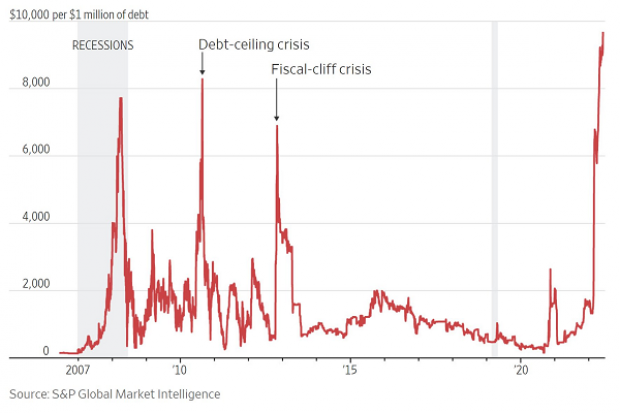Wall Street Getting Nervous About Possible Default
While Wall Street has been fairly blasé about the potential for a market-shaking default by the U.S. in the coming months if lawmakers are unable to agree on a deal to raise the debt ceiling, there are signs that concerns are growing. Bloomberg’s Alex Harris says Friday the yield premium for securities that are exposed to the risk of a U.S. default has been rising, while the premium on those with no exposure has been falling.
“Investors right now are demanding higher yields on securities that are due to be repaid shortly after the US runs out of borrowing capacity,” Harris writes. “That’s because the government won’t be able to sell fresh securities and get cash to repay holders.”
Harris notes that demand for three-month Treasury bills – which mature in July, when some analysts think a default is possible – has been lackluster, pushing the yield up to the highest level since 2001. Shorter-duration notes have seen much higher demand, pushing yields lower.
Perhaps the most obvious sign of concern is the cost of insuring Treasury debt, which has risen sharply, hitting the highest level on record. The chart below, former Obama administration “car czar” Steven Rattner, shows the cost of credit default swaps on Treasury debt that investors use to hedge the risk of nonpayment.


 Yahoo Finance
Yahoo Finance 